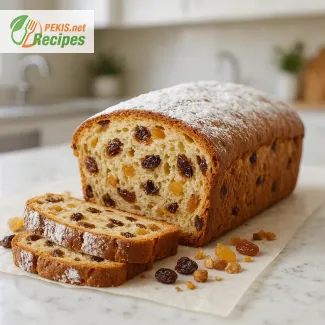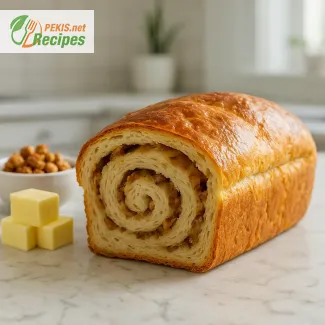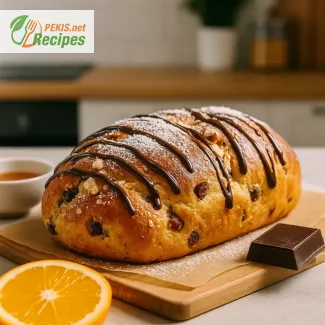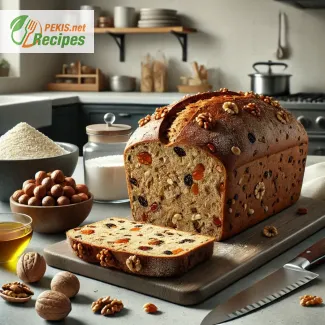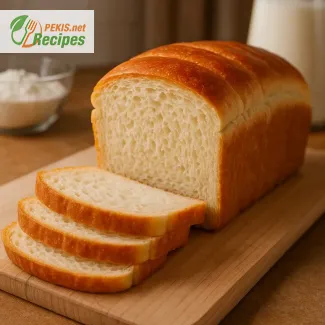
A Symbol of Portuguese Easter: The Story Behind Folar da Páscoa
Discover the sweet bread that celebrates faith, family, and tradition
In the heart of Portuguese Easter celebrations lies a beautifully symbolic and delicious creation: Folar da Páscoa, a sweet, spiced bread crowned with whole eggs baked into its golden crust. This unique Easter bread is more than just a festive treat—it's a cherished culinary tradition that represents the values of rebirth, generosity, and togetherness. Whether enjoyed during a serene Sunday brunch or shared with loved ones over a lively Easter feast, this bread holds a special place in Portugal’s seasonal rituals, where food serves as both a spiritual offering and a symbol of community.
Folar da Páscoa has deep roots in Portuguese history, with its origins tied to ancient customs of offering bread to express gratitude or to seal bonds of peace and reconciliation. In the days leading up to Easter, families across Portugal prepare this sweet bread with great care, often following time-honored recipes passed down through generations. While there are regional variations—some enriched with cinnamon and fennel, others more savory or even filled with meats—the most iconic version is the sweet, yeasted loaf topped with hard-boiled eggs still in their shell. These eggs, often dyed or polished, are embedded into the bread as a powerful symbol of life and renewal.
The bread itself is soft and subtly sweet, with a fragrant aroma that fills the home during baking. The dough is traditionally enriched with butter, sugar, milk, and eggs, resulting in a tender crumb and a slightly brioche-like texture. Ground cinnamon and sometimes fennel seeds infuse the dough with warm, earthy notes, making each bite a delightful mix of comfort and nostalgia. The outer crust is typically brushed with an egg wash, giving the loaf its characteristic shine and deep golden color. As it bakes, the aromas intensify, evoking memories of childhood, family gatherings, and the joy of the Easter season.
One of the most distinctive visual features of Folar da Páscoa is the whole eggs nestled in the dough, secured with thin strips of dough criss-crossed over the top. These eggs are not just decorative—they are part of the bread’s deeper meaning. In Christian symbolism, the egg represents the resurrection of Christ, and placing them in the bread reinforces the spiritual significance of Easter. The number of eggs and their placement can vary by region or family custom, but they always draw attention and spark curiosity at the Easter table.
Serving Folar da Páscoa is a moment of celebration. It’s often the centerpiece of the Easter table, shared after mass or as part of a larger feast that may include lamb, codfish dishes, and other seasonal delicacies. Traditionally, it was also given as a gift, especially from godparents to their godchildren, as a token of love and continuity. This practice underscores the bread’s role not just as a food, but as a cultural artifact, a gift laden with meaning, and a way to connect generations through shared traditions.
What makes Folar da Páscoa truly magical is how it bridges the gap between ritual and flavor, offering both a taste of Portuguese heritage and a sense of belonging. In a world that often moves too fast, baking and sharing this Easter bread offers a way to pause, reflect, and celebrate the things that matter most—faith, family, and connection. Whether you’re recreating this recipe in a modern kitchen or preparing it in a rustic village oven, every step carries a piece of Portugal’s soul.
As more people around the world discover the charm of traditional Easter breads, Folar da Páscoa continues to gain recognition for its striking appearance and soulful taste. It is a beautiful reminder that some of the most meaningful moments in life are shared around a table, with recipes that speak to our roots, our stories, and our enduring hope for new beginnings.
In the sections that follow, you’ll learn how to make this timeless bread at home—from the list of ingredients to step-by-step instructions that ensure your Folar da Páscoa turns out just as delightful and meaningful as the ones served in Portugal. Prepare to fill your kitchen with the scents of tradition and joy, and bring the spirit of a Portuguese Easter into your own celebration.
- In a small bowl, dissolve the yeast in the warm milk with 1 tablespoon of sugar. Let it sit for 10 minutes until foamy.
- In a large mixing bowl, combine the flour, remaining sugar, salt, cinnamon, fennel, and lemon zest.
- Add the melted butter, eggs, and the activated yeast mixture into the flour blend.
- Knead the dough until smooth and elastic – about 10 minutes by hand or 5–6 minutes in a stand mixer.
- Shape the dough into a ball, cover with a clean towel, and let it rise in a warm place for 1.5 to 2 hours, until doubled in size.
- Punch down the dough and divide it into two pieces – one slightly larger than the other.
- Form the larger piece into a round loaf and place it on a lined baking sheet.
- Gently press 3–4 hard-boiled eggs (in their shells) into the dough.
- Roll out the remaining dough and cut it into thin strips. Cross them over the eggs to secure them.
- Cover the loaf and let it rise again for 45 minutes.
- Preheat the oven to 180°C (350°F).
- Brush the bread with egg wash.
- Bake for 35–40 minutes until golden brown and hollow-sounding when tapped on the bottom.
- Allow the bread to cool on a wire rack before slicing and serving.
Creative Enhancements and Tips for Perfecting Folar da Páscoa
Small changes that elevate the flavor, texture, and symbolism of this Easter classic
While the traditional Folar da Páscoa is cherished for its symbolism and flavor, many passionate bakers often wonder how they can add a personal touch to this beloved Easter bread. Whether you’re trying to craft a healthier version, boost the aroma, or achieve a fluffier texture, there are numerous ways to refine and elevate the original recipe without sacrificing its authenticity. With just a few strategic adjustments or additions, this festive bread can be transformed into something even more delightful while still honoring its Portuguese roots.
Using enriched dough for a softer and more luxurious crumb
The base of Folar da Páscoa is a lightly sweetened, yeast-leavened dough. For a more buttery and tender texture, you can enrich the dough by increasing the proportion of butter and eggs. Replacing a portion of the milk with cream or evaporated milk results in a richer flavor and softer crumb. Adding an extra yolk contributes to a more golden hue and enhances the dough’s elasticity, making it easier to shape and more pleasant to chew.
Playing with flavors: spices, zests, and extracts
The inclusion of cinnamon and fennel in the original recipe gives the bread its classic warm and earthy notes. However, home bakers can experiment by layering in more aromatic flavors:
- Add orange or tangerine zest for a fresh, citrusy lift that pairs beautifully with the sweetness of the bread.
- A touch of pure vanilla extract adds softness and depth to the overall aroma.
- Swapping fennel for anise seeds creates a bolder licorice-like note that resonates well with the Easter theme.
These changes subtly shift the profile of the bread while keeping it rooted in Portuguese tradition.
Incorporating dried fruit or nuts for added complexity
Adding finely chopped dried figs, apricots, or raisins can bring natural sweetness and chewiness to the dough. Alternatively, incorporating chopped almonds, hazelnuts, or walnuts adds a satisfying crunch. These additions can be mixed directly into the dough after the first rise or sprinkled on top before baking for a decorative and flavorful finish.
If you prefer a more indulgent version, consider brushing the top with honey syrup or a mixture of sugar and orange juice after baking for a shiny, sticky glaze that brings both flavor and visual appeal.
Why homemade always tastes better
There is something unmistakably comforting about baking Folar da Páscoa at home. Not only do you control the ingredients and quality, but the entire process—from mixing and kneading to shaping and decorating—is filled with intention and care. Store-bought versions may save time, but they often compromise on freshness, texture, and authenticity. Homemade Folar carries the scents and warmth of your kitchen, the patience of rising dough, and the joy of sharing something made with love. That alone elevates the eating experience far beyond taste.
Common mistakes to avoid
Even experienced bakers can make errors that affect the final product. Here are some frequent pitfalls to steer clear of:
- Overproofing: Letting the dough rise too long can result in a weak structure, leading to a flat or collapsed loaf.
- Under-kneading: The dough must be kneaded long enough to develop the gluten, ensuring it holds its shape and rises properly.
- Adding too much flour: Over-flouring can make the dough dry and dense. The dough should be slightly sticky but manageable.
- Incorrect placement of eggs: Pushing hard-boiled eggs too deep into the dough can cause them to crack or become unevenly baked.
Ensuring careful handling of each step makes a noticeable difference in the outcome.
Healthier adaptations without losing authenticity
If you're looking to make a healthier version of Folar da Páscoa, there are smart ways to do so:
- Substitute white sugar with coconut sugar or unrefined cane sugar, which adds complexity and a slight caramel undertone.
- Replace part of the white flour with whole wheat flour (up to 30%) to increase fiber without compromising the dough’s softness.
- Use olive oil instead of butter for a Mediterranean twist and a boost in unsaturated fats.
- Replace some of the milk with plant-based options like oat or almond milk, which work well in enriched doughs.
These adaptations make the bread more nutritious while preserving its festive essence.
Making it more symbolic and festive
Beyond taste, Folar da Páscoa is a symbolic centerpiece. You can heighten its visual impact by:
- Coloring the eggs naturally with ingredients like beetroot, turmeric, or red cabbage to give the loaf a vibrant appearance.
- Braiding the dough for a more intricate design, which not only looks impressive but also gives the crust extra texture.
- Using stamped baking paper or a decorative baking mold to imprint seasonal patterns on the bottom or sides of the loaf.
These touches turn a simple bread into a stunning Easter showpiece.
Making it your own without losing its soul
The beauty of Folar da Páscoa lies in its versatility. Every household has the potential to add its own legacy to this ancient recipe. Whether it's through flavor enhancements, decorative elements, or healthier substitutions, what matters most is the sense of connection, tradition, and sharing. Once you’ve mastered the basics, don’t be afraid to experiment and infuse the bread with your own story. After all, it’s not just about baking—it’s about honoring the past while creating something meaningful for the present.
Allergens present:
- Gluten (wheat flour)
- Eggs
- Dairy (butter)
Suggestions to replace allergens and gluten:
- Replace wheat flour with a gluten-free flour blend suitable for yeast baking (add 1 tsp xanthan gum).
- Use plant-based butter for a dairy-free version.
- Use egg replacer (e.g., flax egg: 1 tbsp ground flaxseed + 3 tbsp water per egg) if allergic to eggs.
- Vitamin B1 (Thiamine): 0.3 mg – supports energy metabolism
- Vitamin B2 (Riboflavin): 0.4 mg – essential for red blood cell production
- Vitamin A: 150 µg – supports vision and immune function
- Calcium: 40 mg – important for bones and teeth
- Iron: 2.5 mg – helps oxygen transport in the blood
- Magnesium: 20 mg – supports muscle and nerve function
- Phosphorus: 90 mg – needed for energy production
- Lutein + Zeaxanthin: 120 µg – support eye health
- Selenium: 10 µg – contributes to antioxidant defense
- Vitamin E: 0.5 mg – protects cells from oxidative stress

